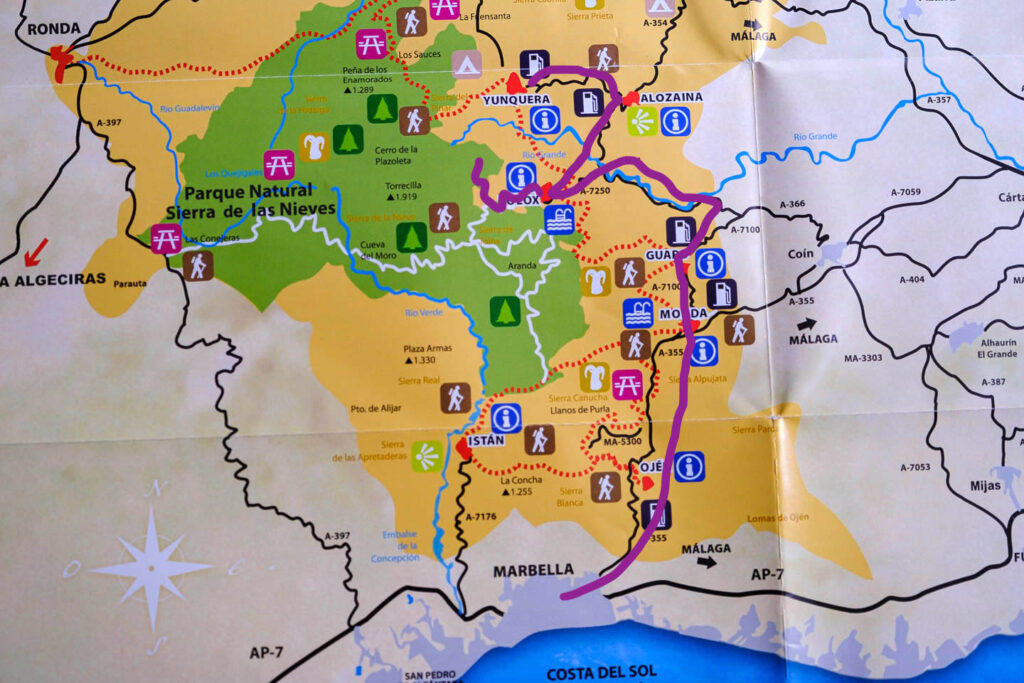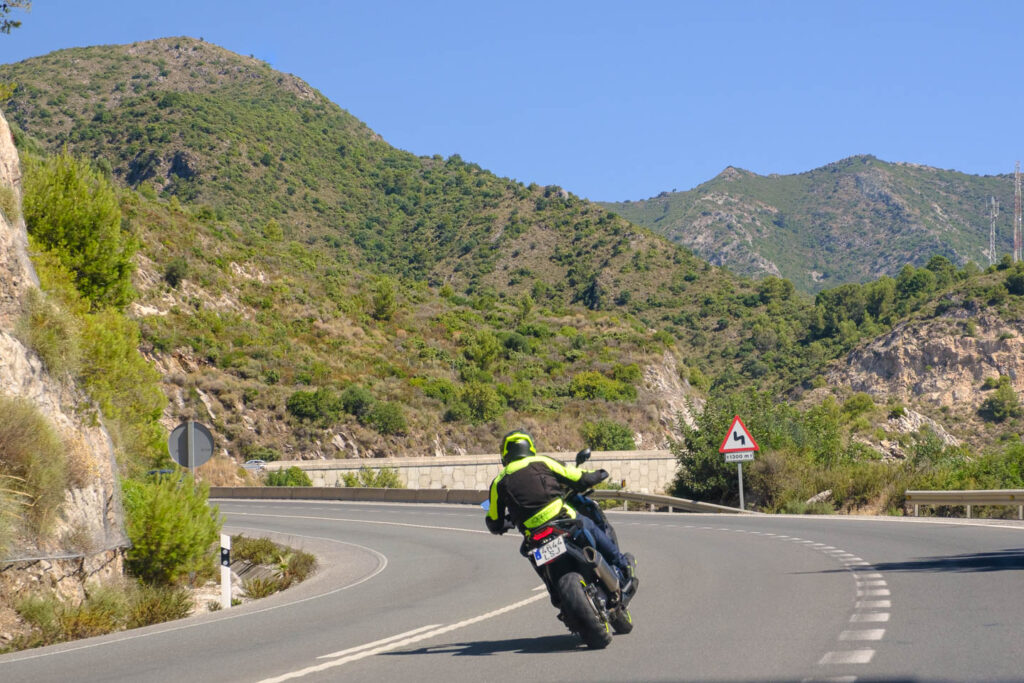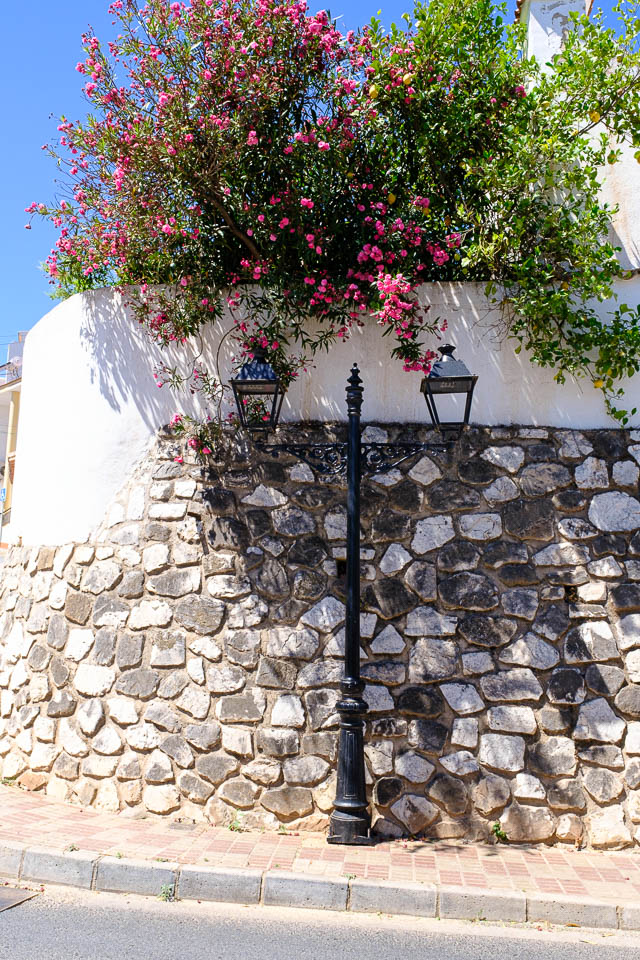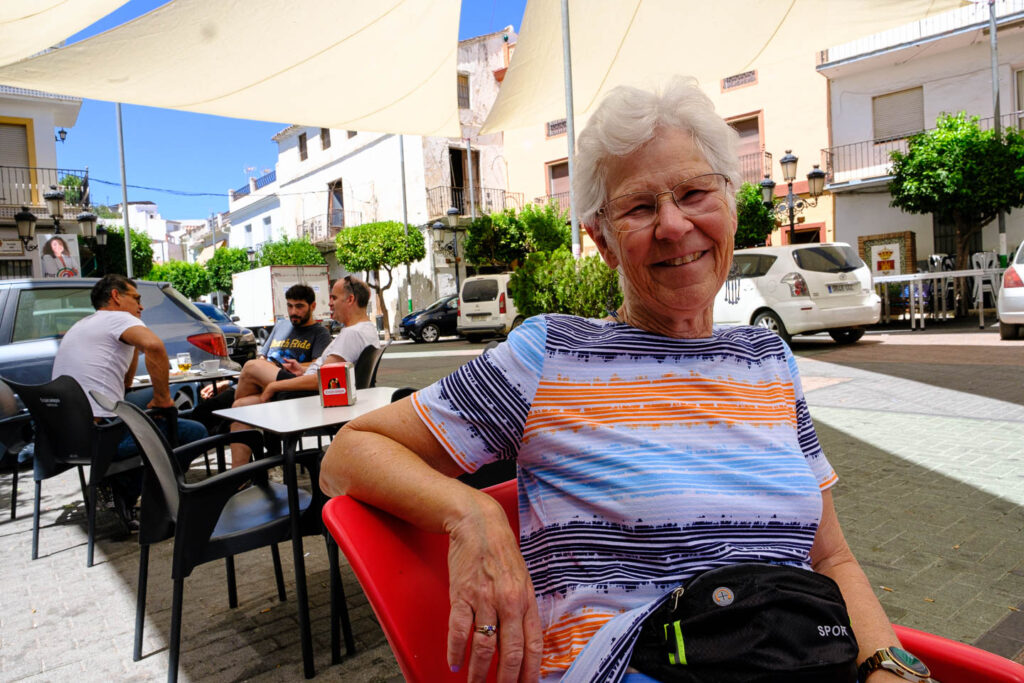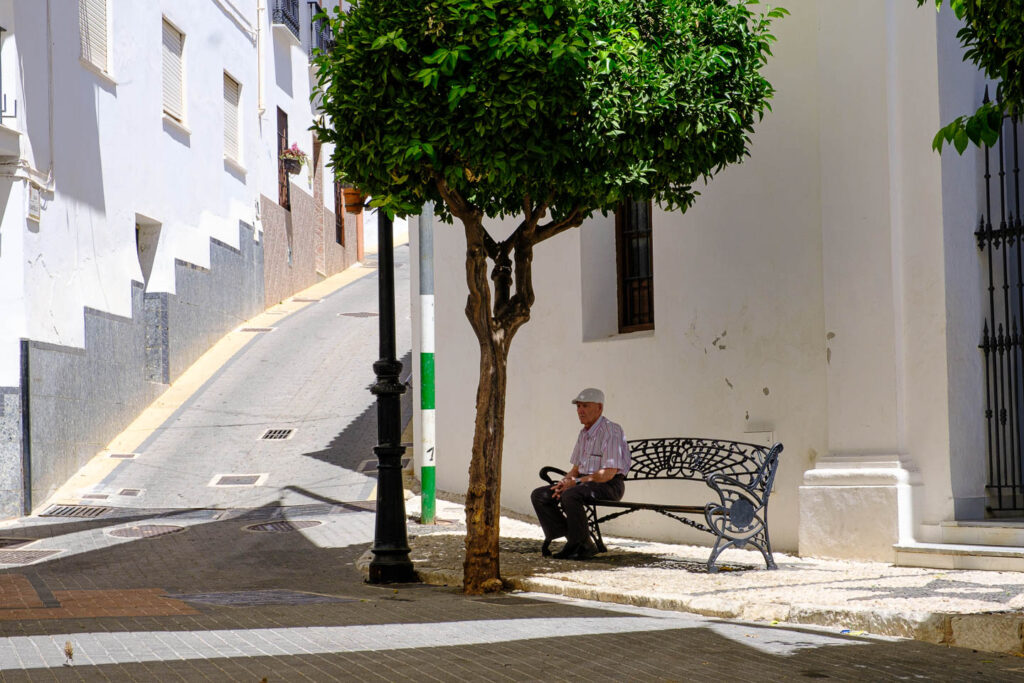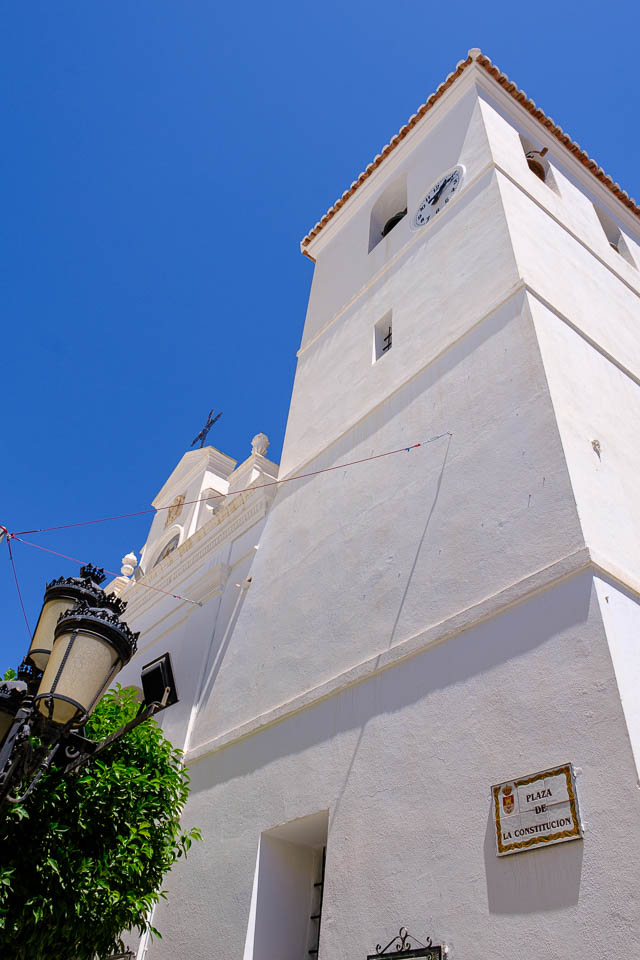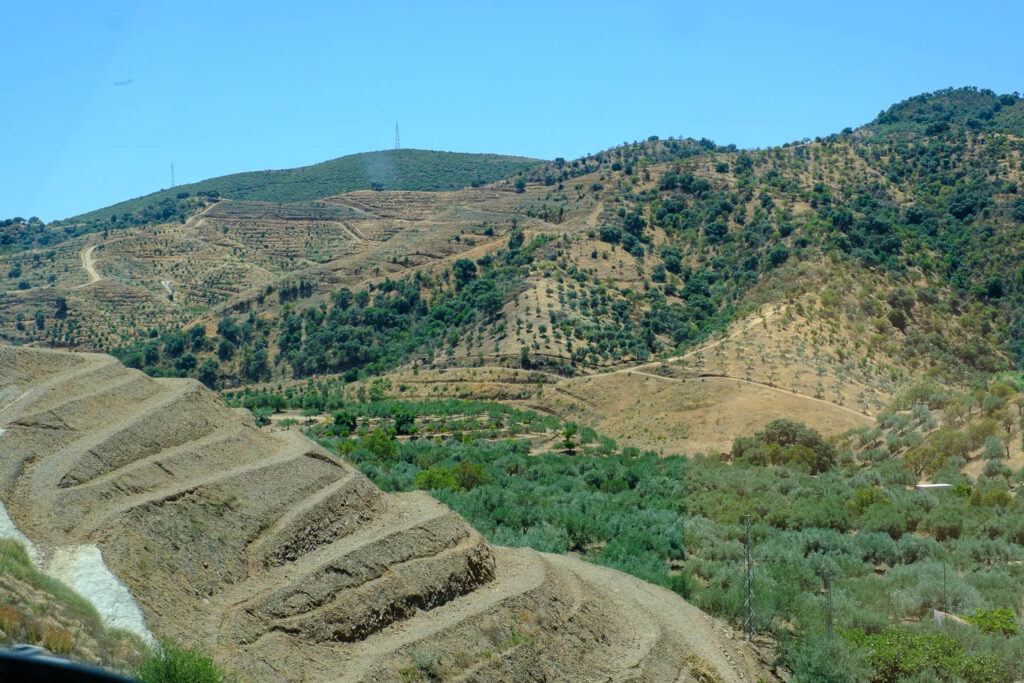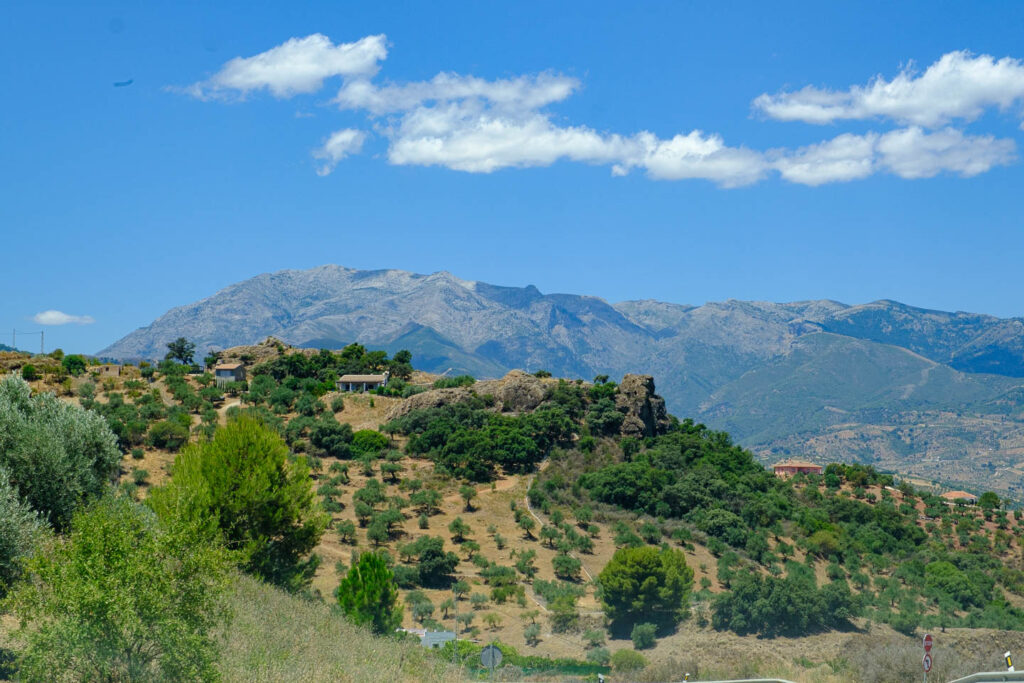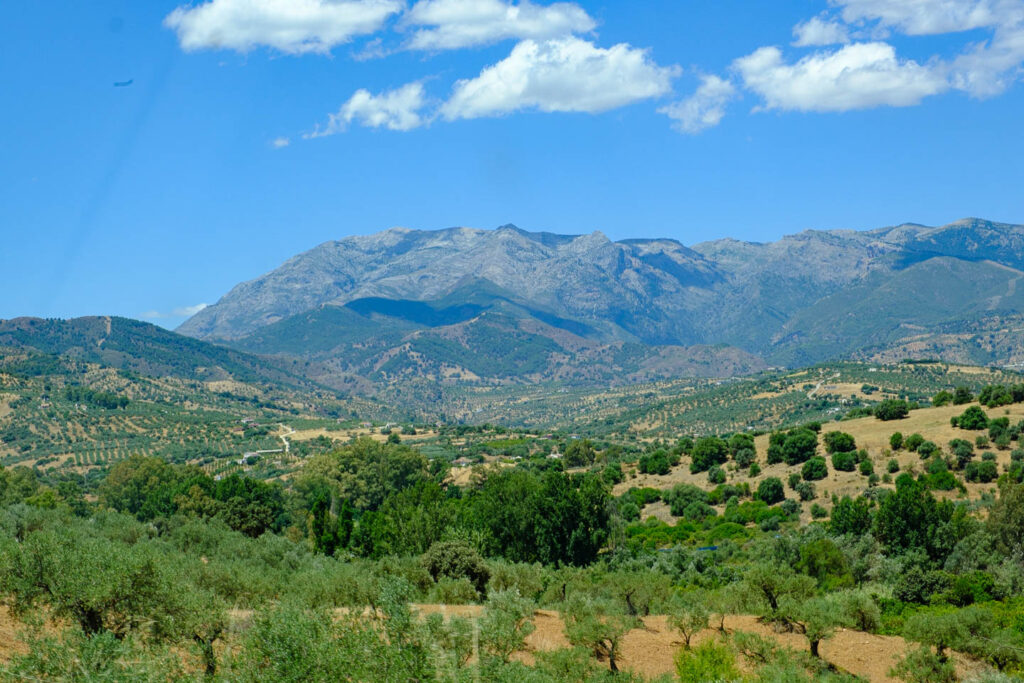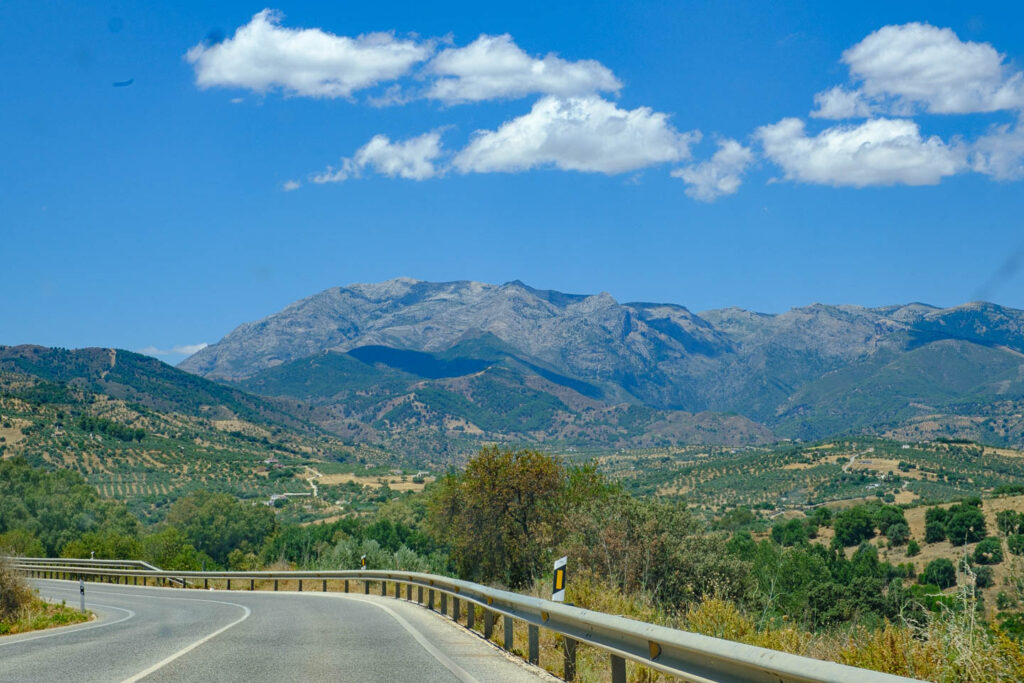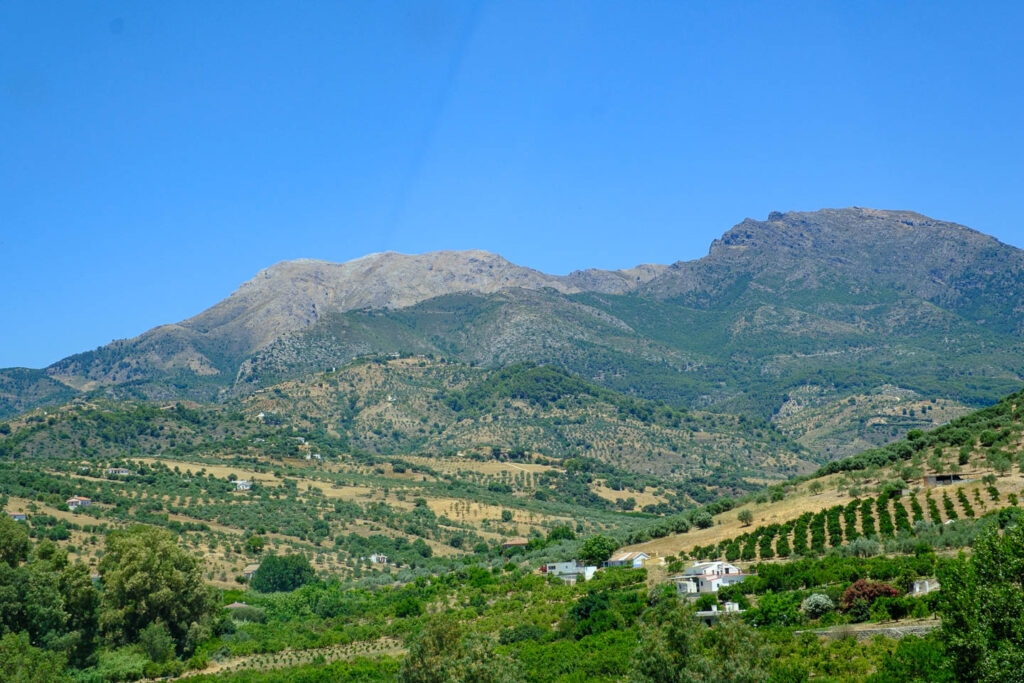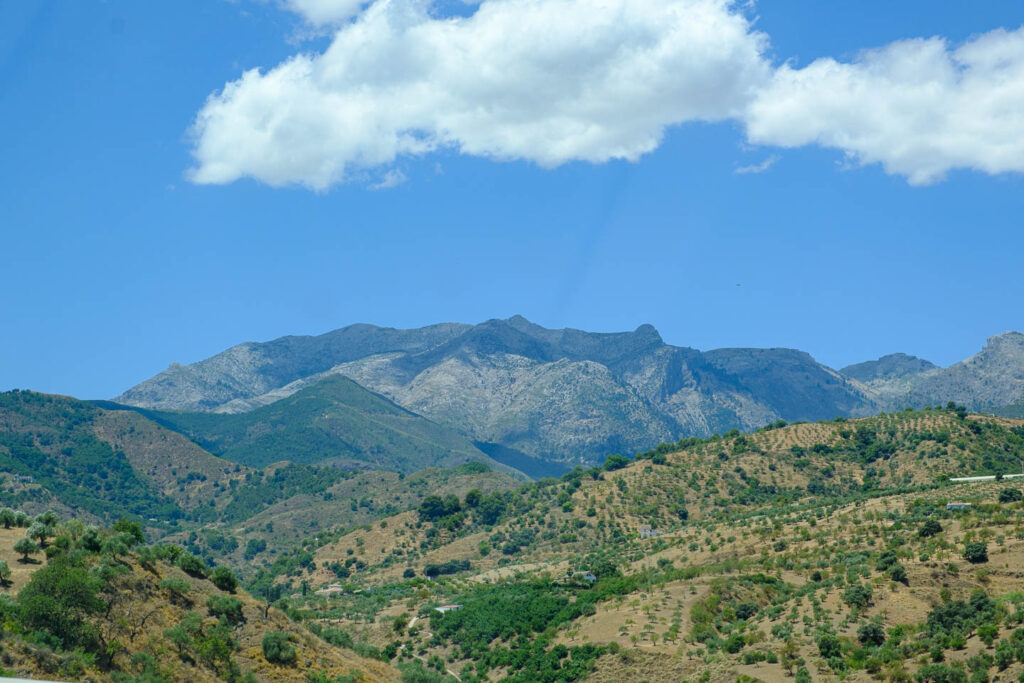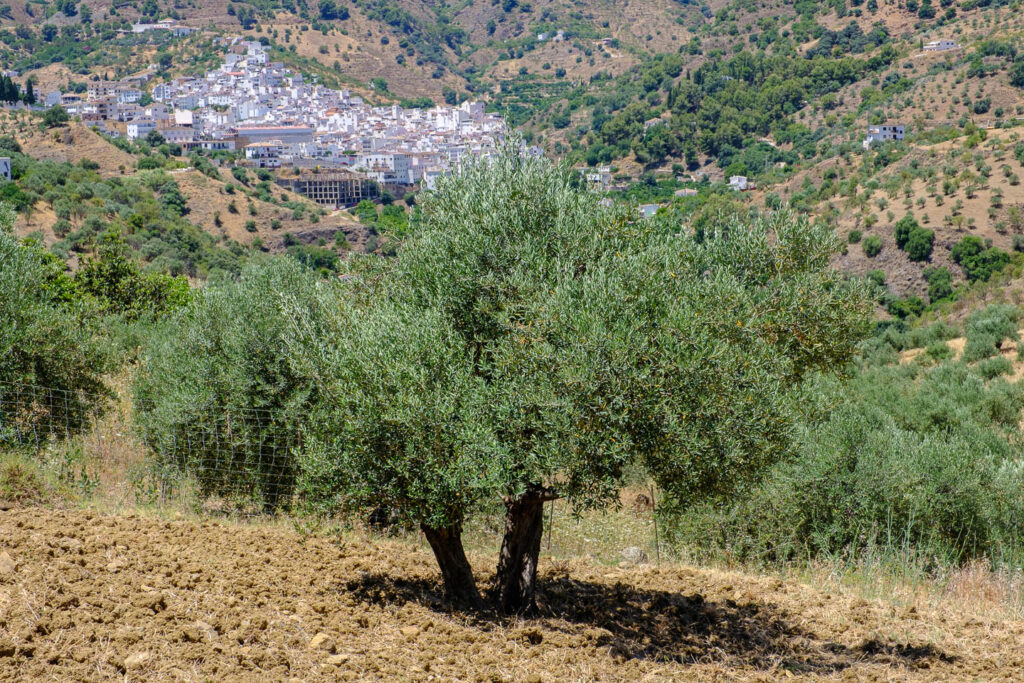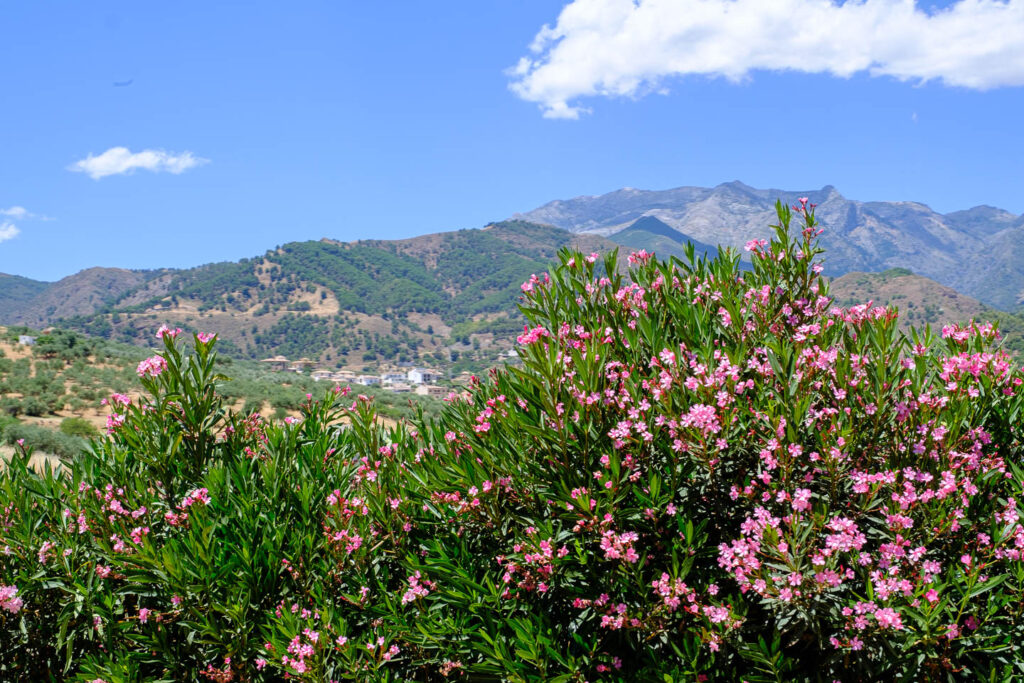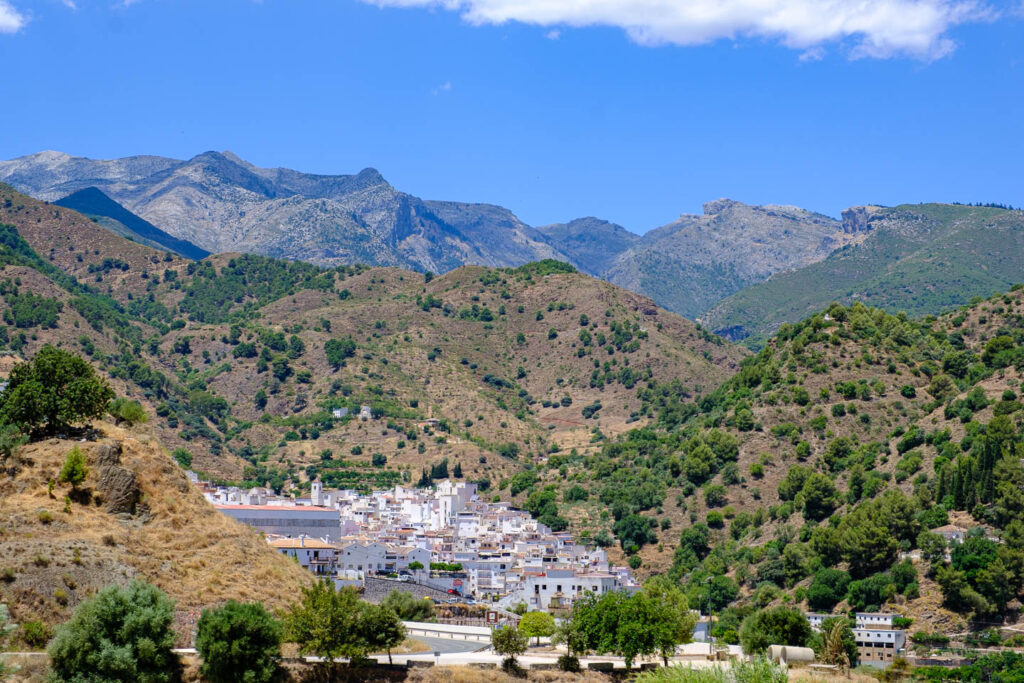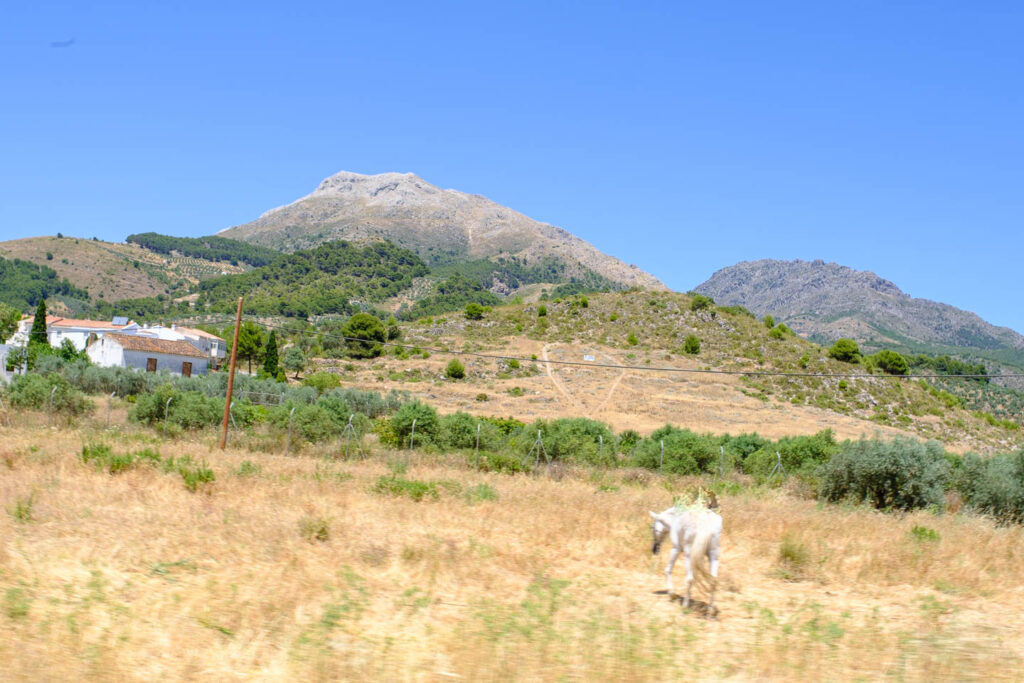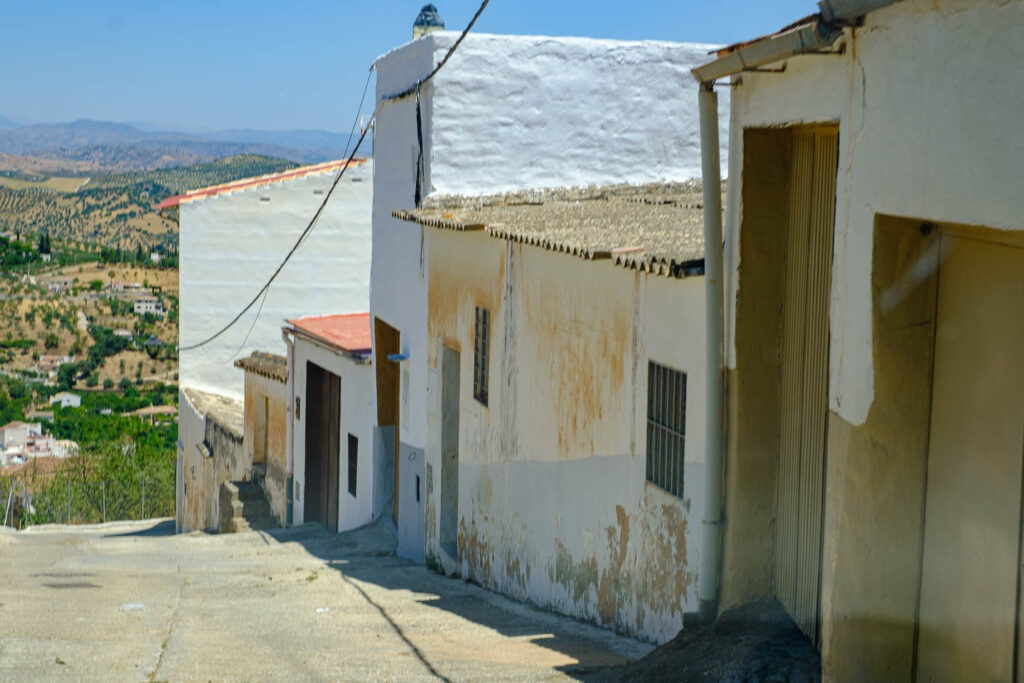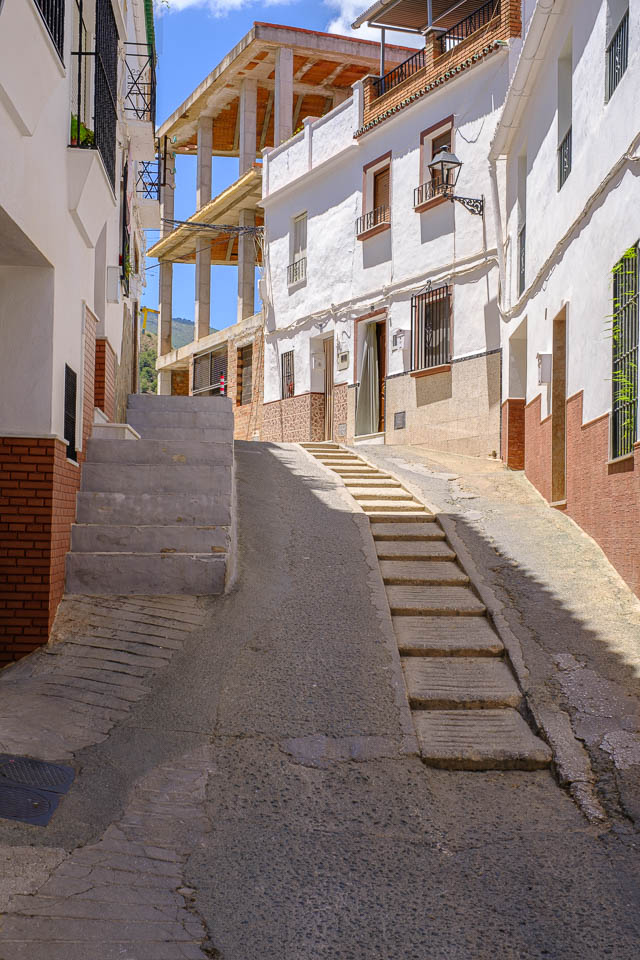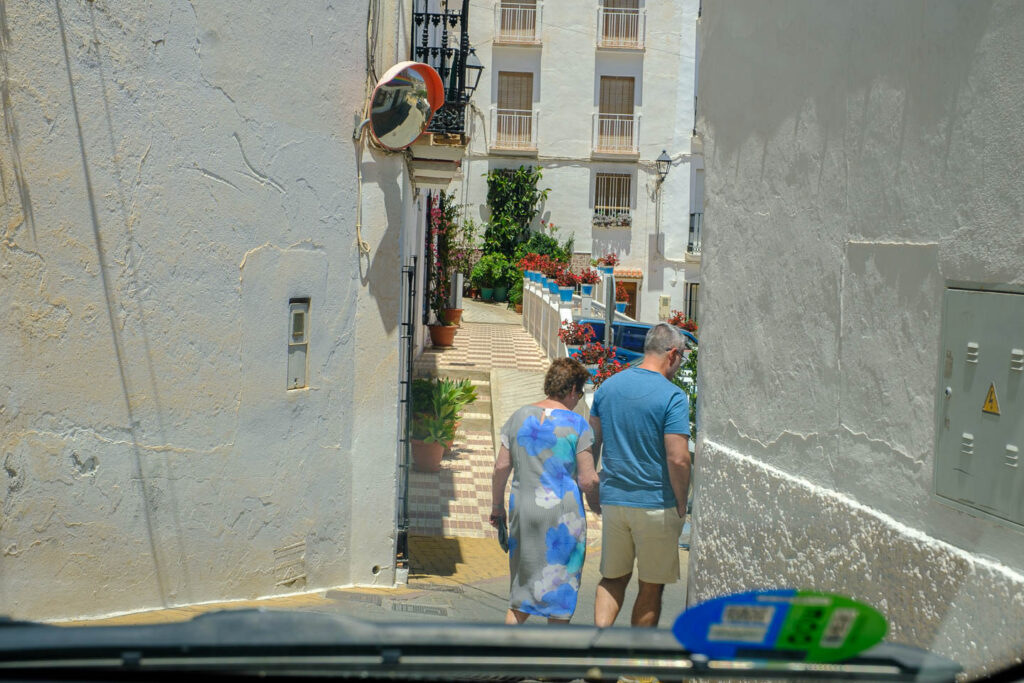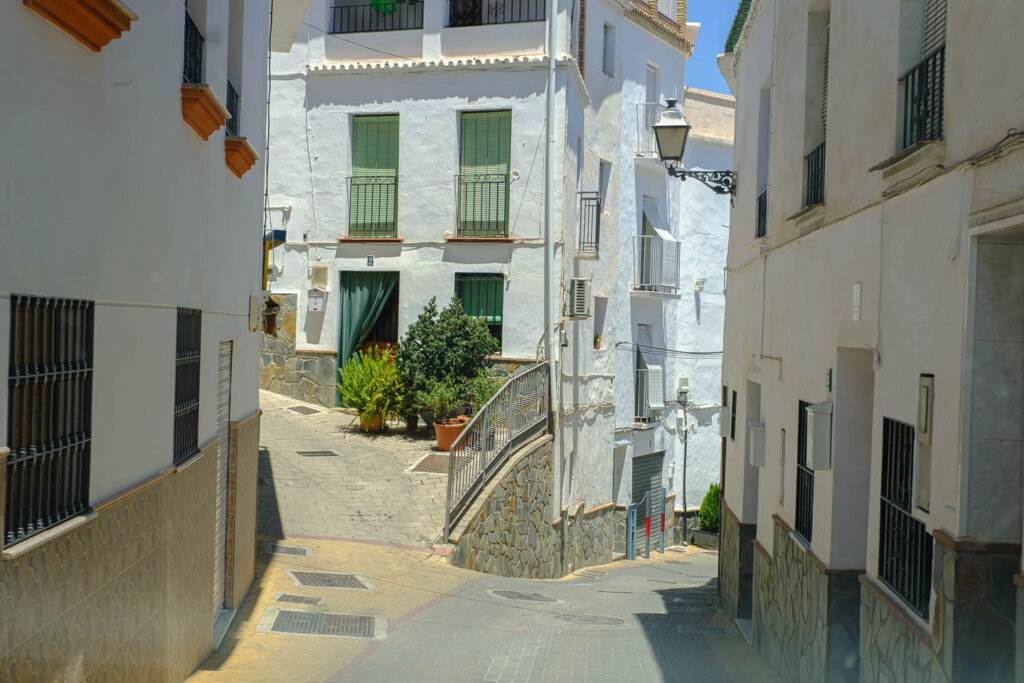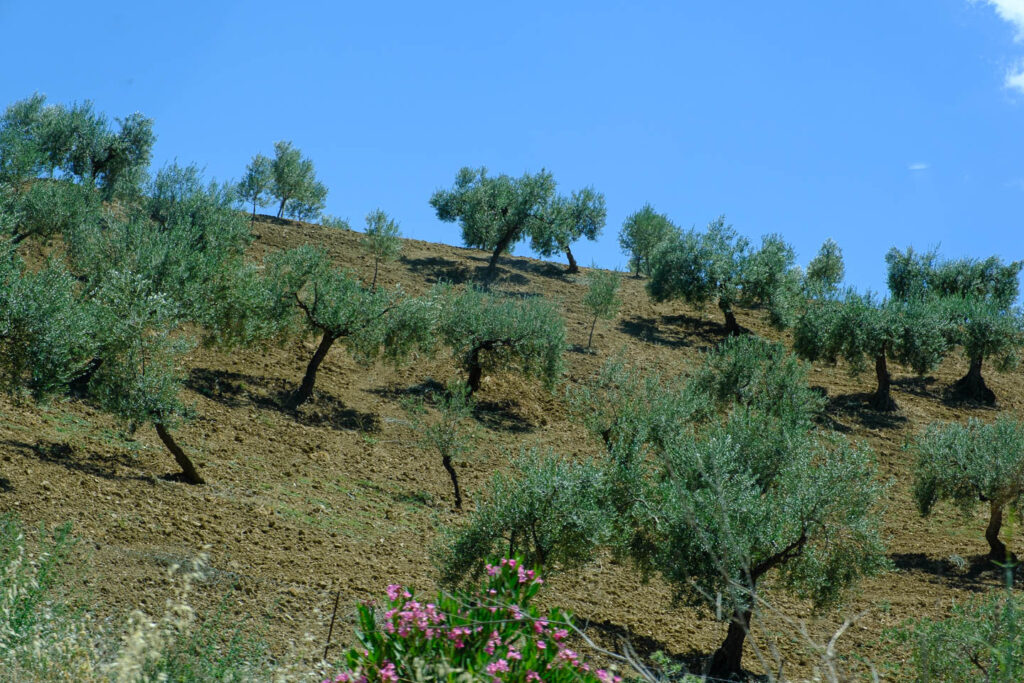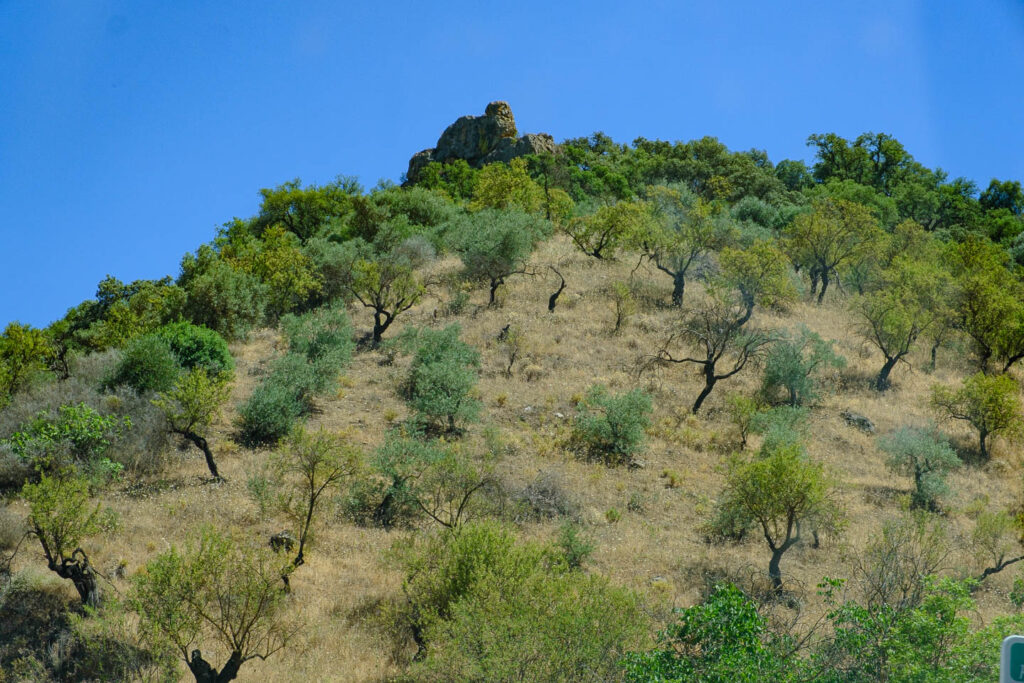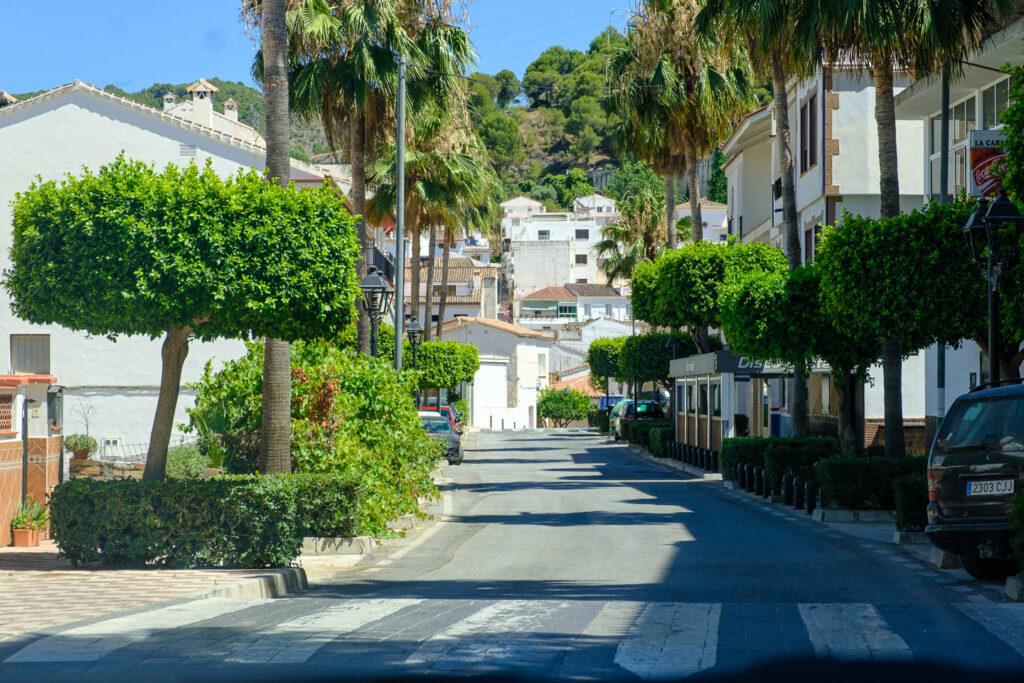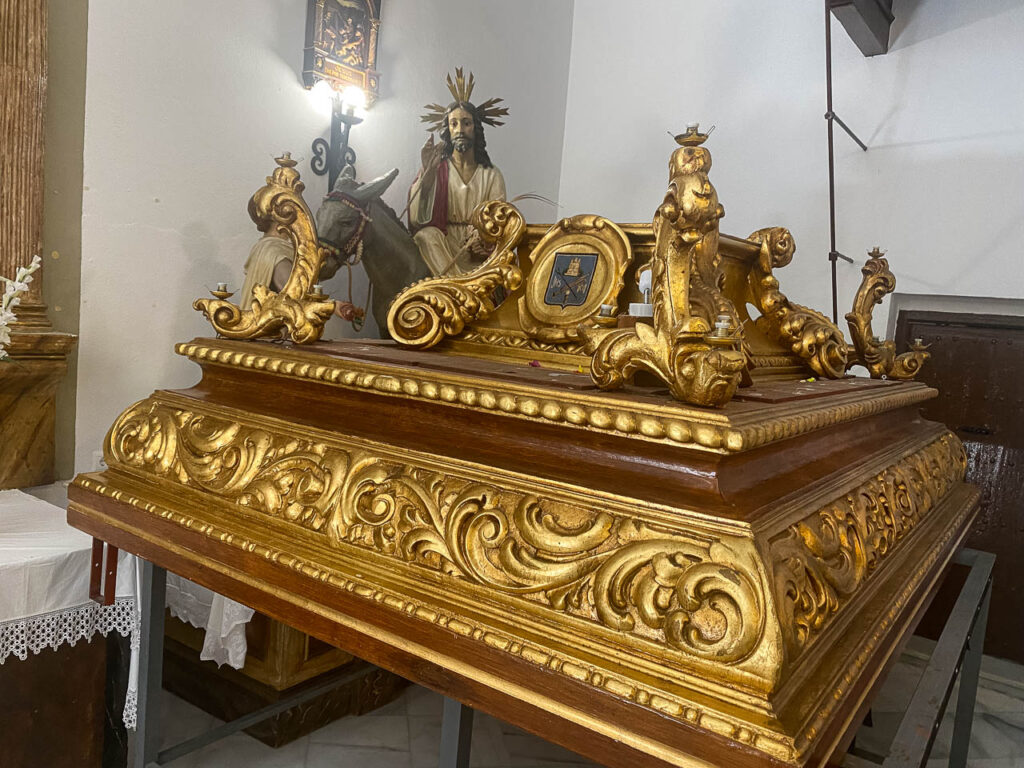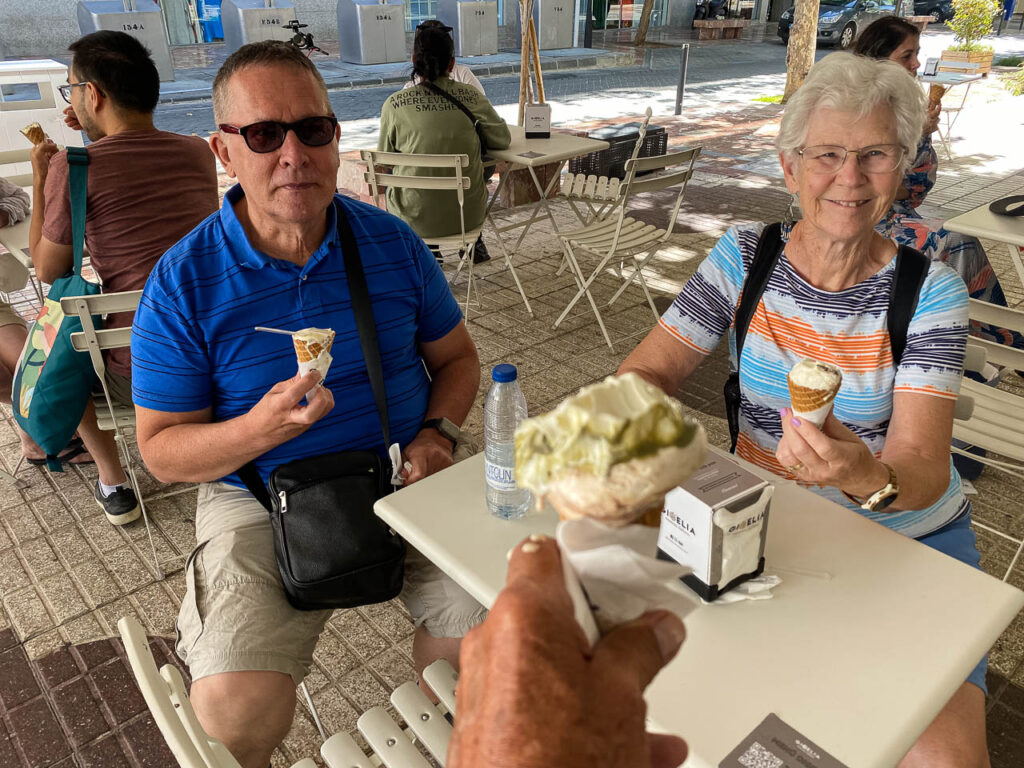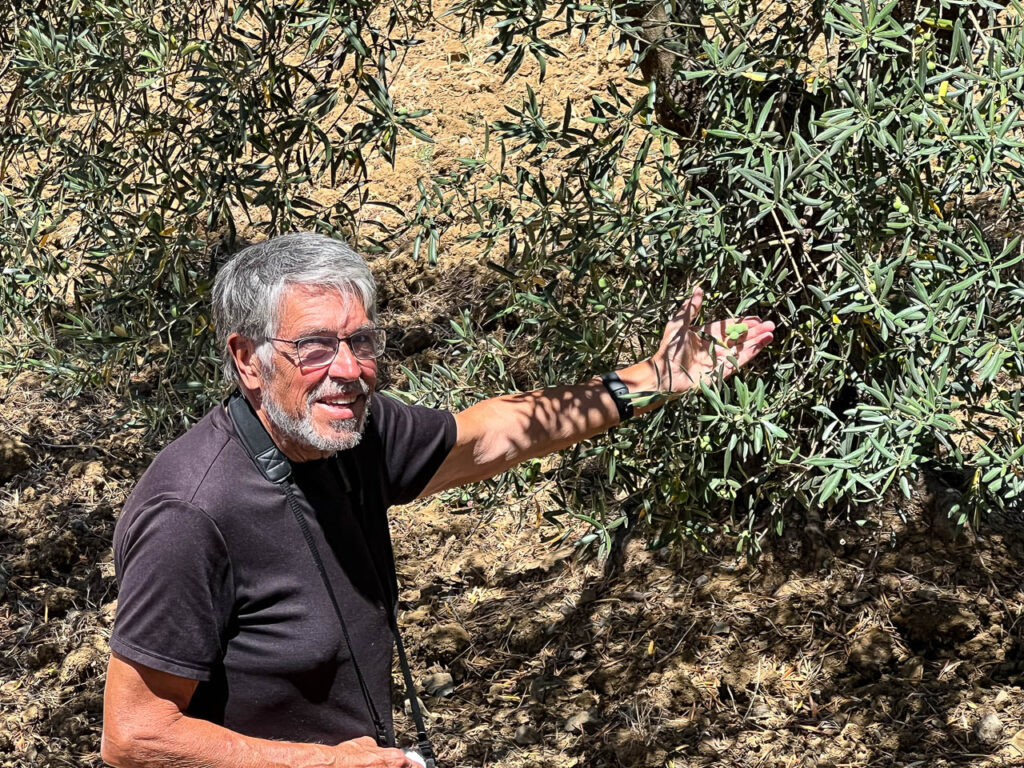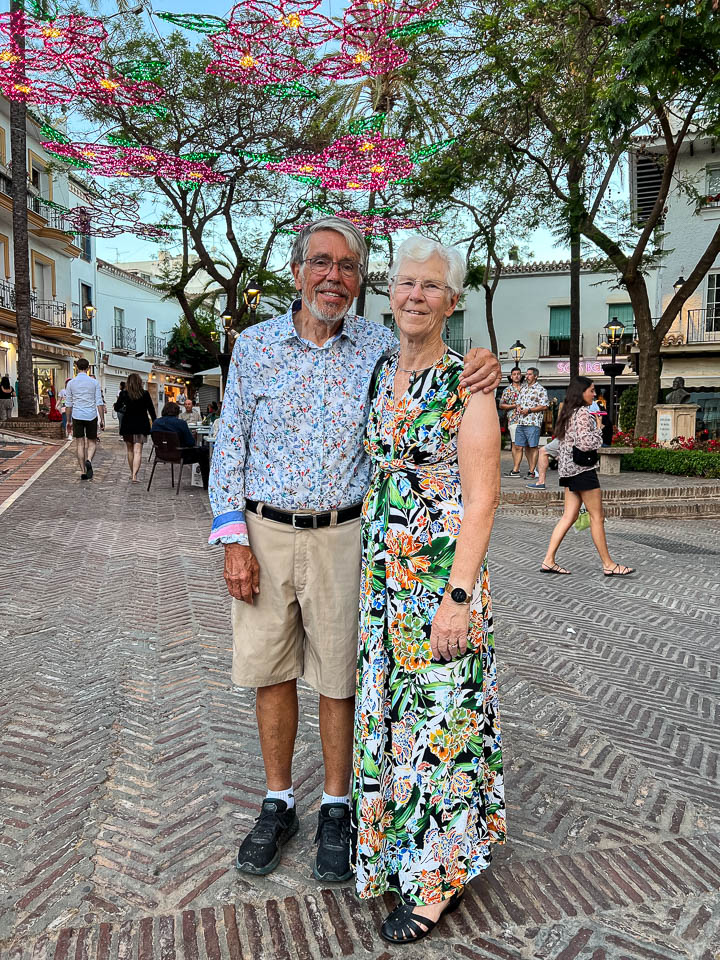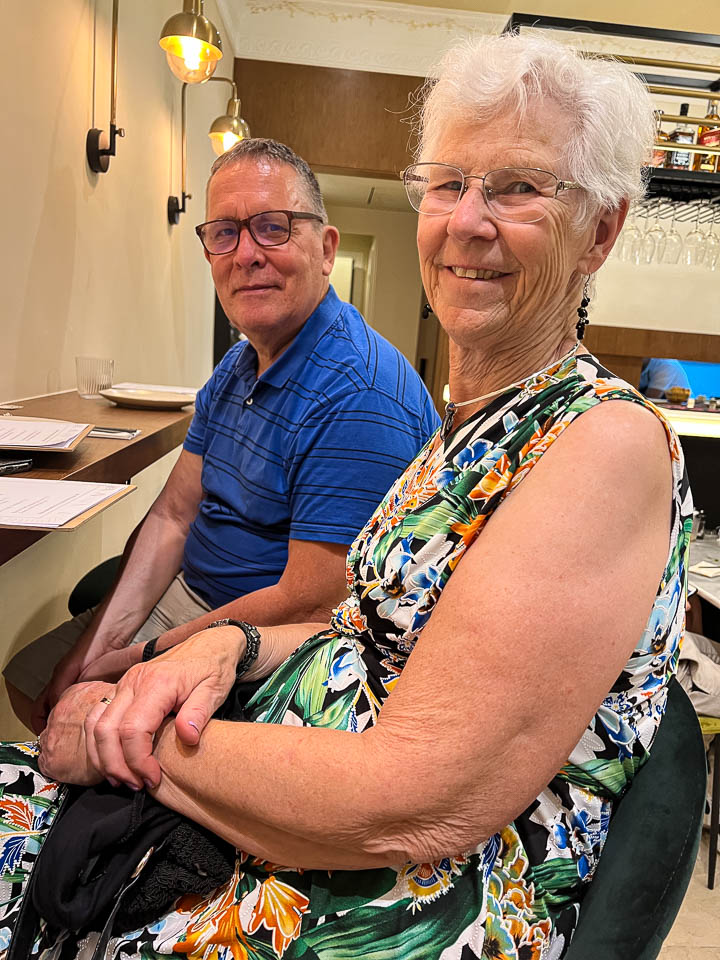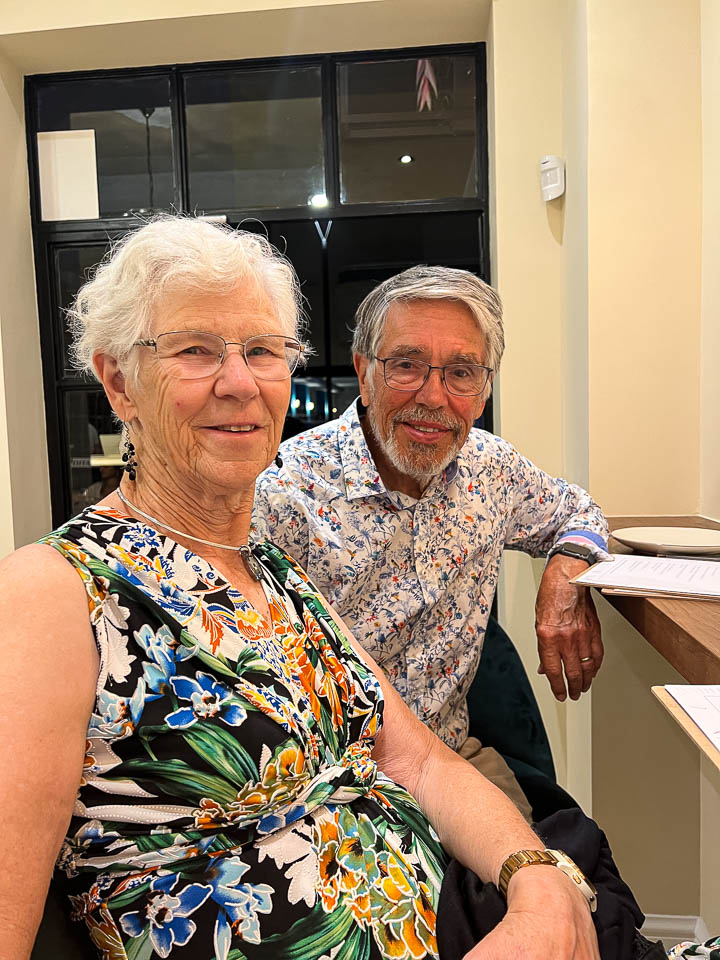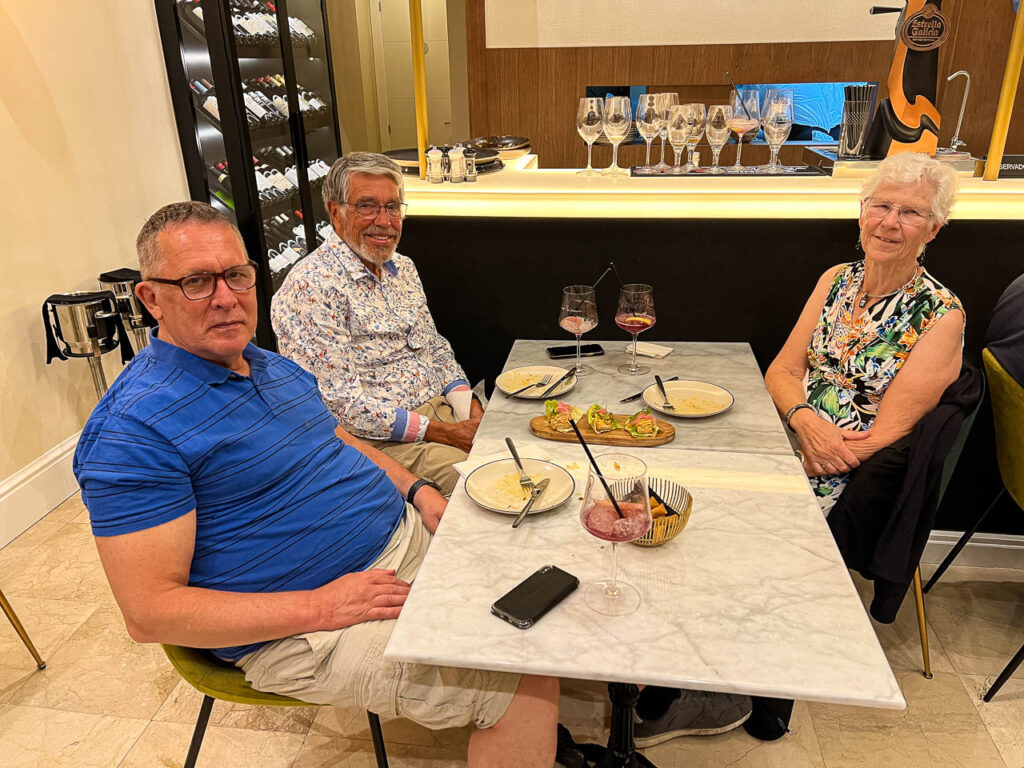The focus today wasn’t towns or cities but mountains – the Sierra de las Nieves – The Mountains of the Snow – an hour’s drive north of Marbella was where we explored today. We did find several very nice small villages in our travels but that wasn’t our main objective. For me, it was a fitting last day of official touring, a chance to appreciate (and photograph) the natural beauty of Andalusian Spain.
But first, before we left, we had a master class in preparation of the Spanish tortilla presented by Chef Enrique. The Spanish version has no relationship to the Mexican tortilla. No taco shells, no beans, no tomatoes, no rice. The only thing the two versions have in common is onions but that’s a point of contention.
The Spanish tortilla consists of eggs, potatoes and onions, cooked in olive oil, sort of like an omelet. In Spain there are those who want their tortillas with onions and those who think onions in tortillas is an abomination. It’s like Real Madrid vs. Barcelona Club. It approaches left vs. right politics (in any country these days), any two of which spark not intellectual disagreement but a ranting emotional outburst. Enrique says that if conversation is lagging, just raise the onion-in-tortilla question and the discussion will last an hour, even if the participants have talked it over ad nauseam in times past.
Here are the step-by-step instructions, including pictures.
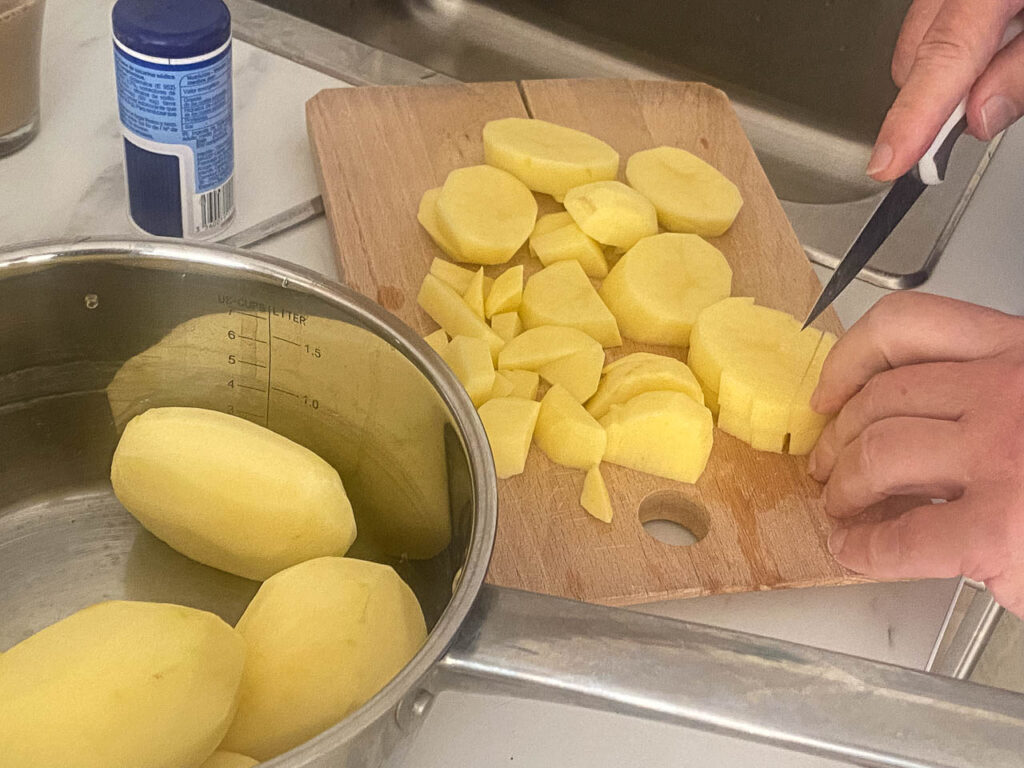
1. Peel and DRY the potatoes (Enrique used 7 today because that’s how many we had). DRYING the potatoes is important. slice them into fairly thin chunks. Salt the potatoes (although low-salt types like me might omit this step).
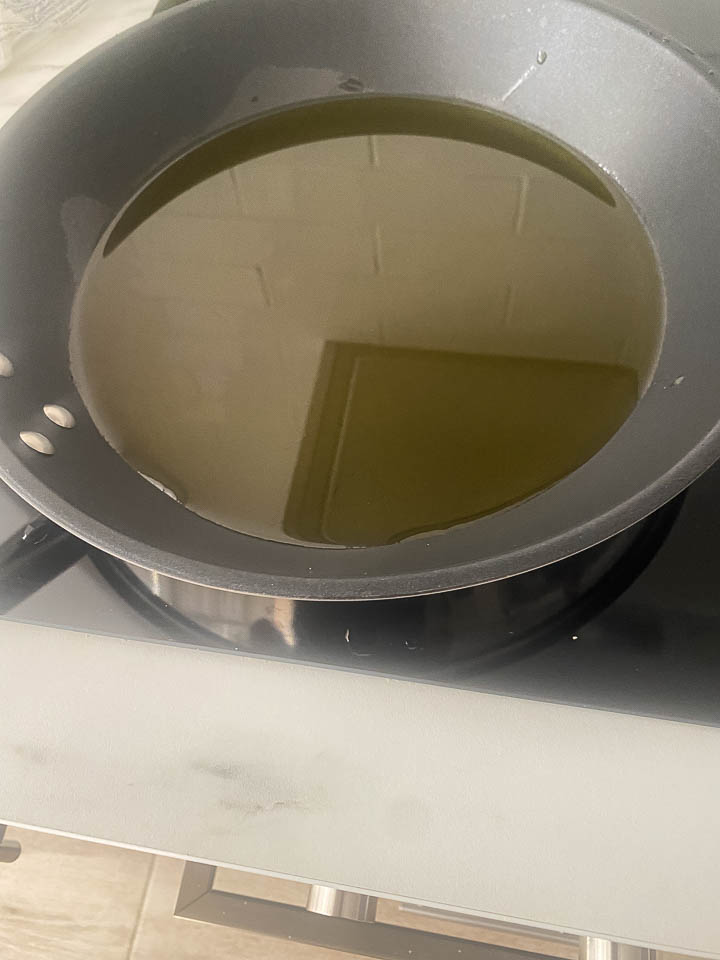
2. Add lots of olive oil to a COLD pan. Starting with a COLD pan is important. Add the potatoes and stir to coat them with oil. Cook gently over medium heat.

3. Don’t fry the potatoes, just gently sauté them in the oil. Plan on 20 to 25 minutes until the potatoes are soft

4. The oil should be gently bubbling.
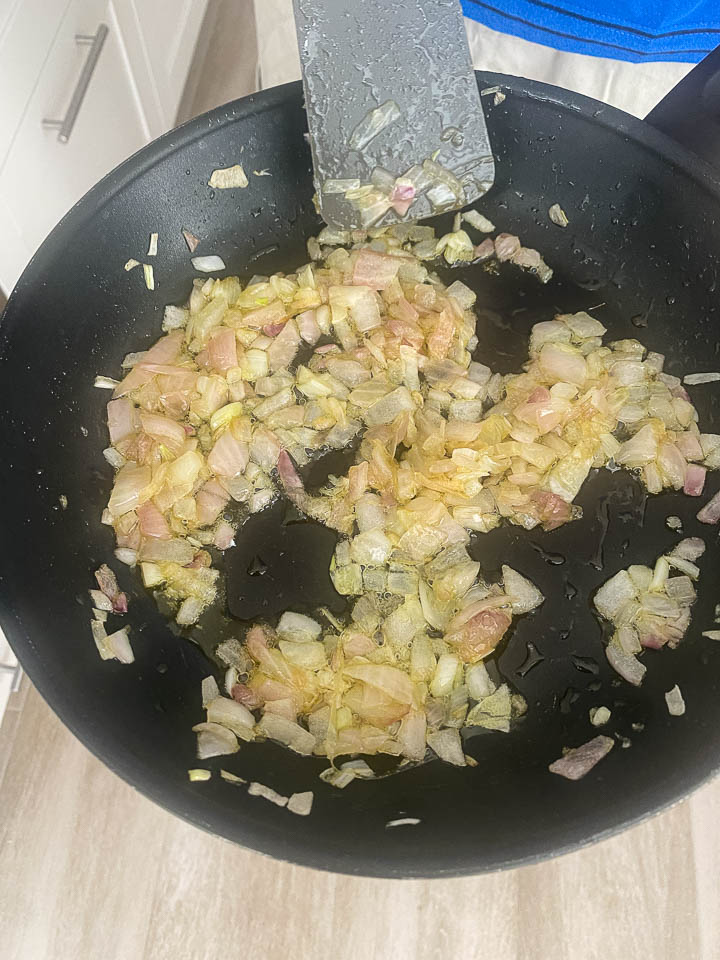
5. Meanwhile peel WHITE onions (white onions are required). Sauté in a different pan with olive oil. Again, soften the onions, don’t fry them. Caramelized onions are what you want.
6. Whisk eggs in a bowl. We used 6 eggs but Enrique thinks we could have used 8 eggs, given the number of potatoes we used. When the onions are done, add them to the eggs.
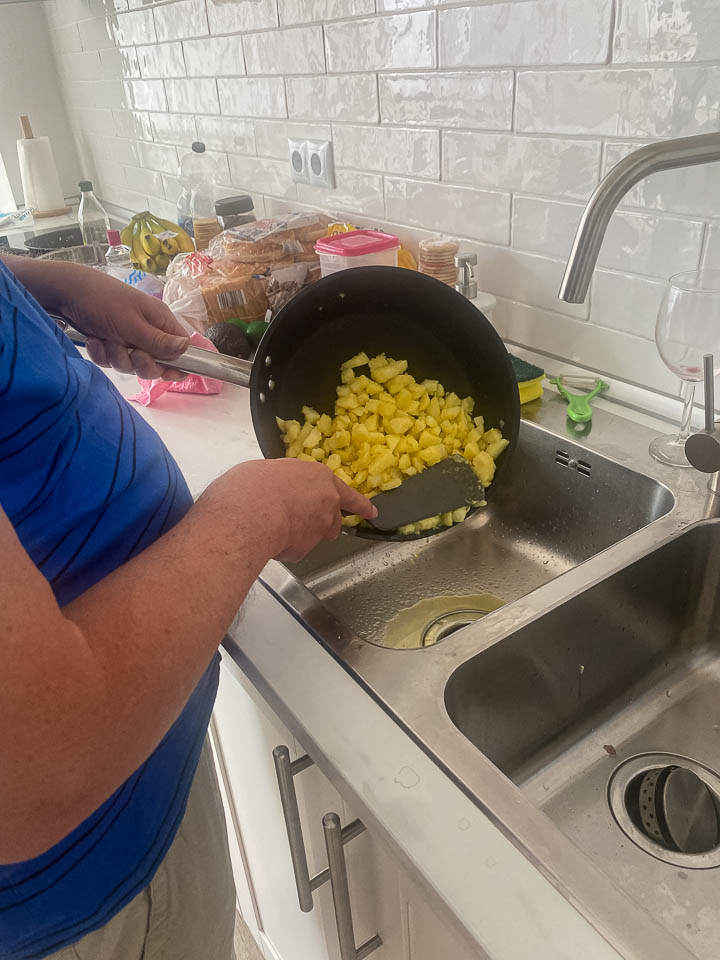
7. When potatoes are done, tip out some of the oil from pan. Drain the rest of the oil using a colander. Save the oil if you wish for next time.
8. Let potatoes rest (cool) a bit then add to eggs and onions. Mix and let stand a few minutes so potatoes take on flavor of onions.
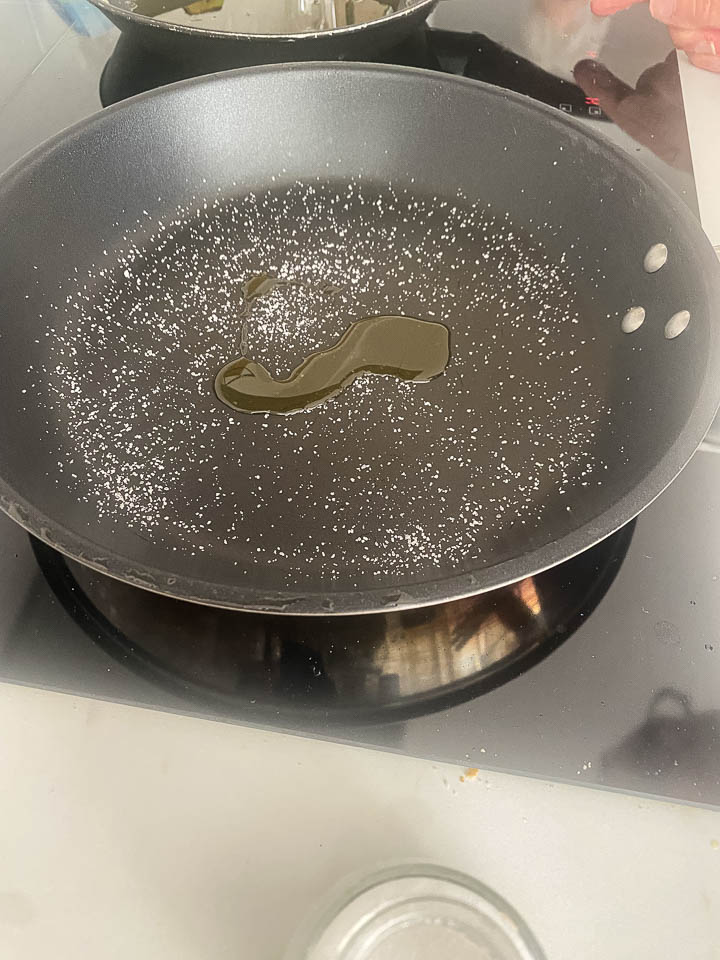
9. Wash and cool the pan, which should be slightly smaller than a dinner plate. Sprinkle a little salt onto the clean, cool pan. Add the reserved olive oil to coat the pan. Cook for a minute or two over medium heat. Enrique’s aunt said the salt helps to avoid sticking.

10. Pour the mixture into the pan and cook over medium to medium-high heat.

11. Puncture the mixture and relieve the edges as it cooks to form the tortilla. Cook until it’s firm and most of the egg has solidified.
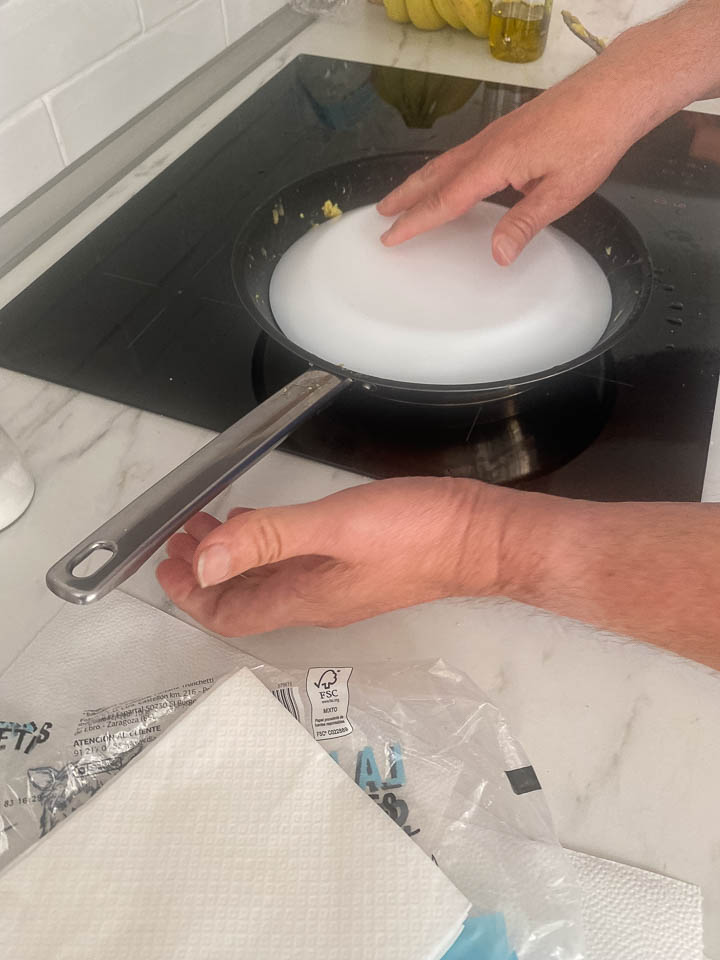
12. Here’s the tricky part: Use a spatula to make sure the tortilla isn’t sticking to the pan. Place a dinner plate on top of the tortilla.

13. Flip it upside down.
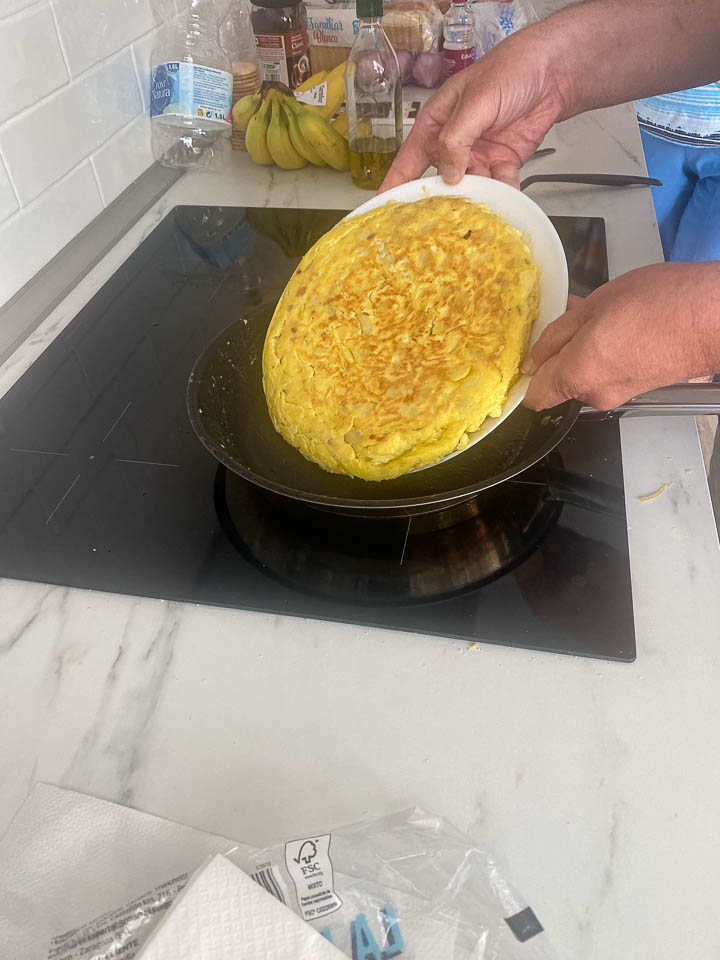
14. Return the tortilla to the pan and cook on the other side until done, probably another five minutes or so.
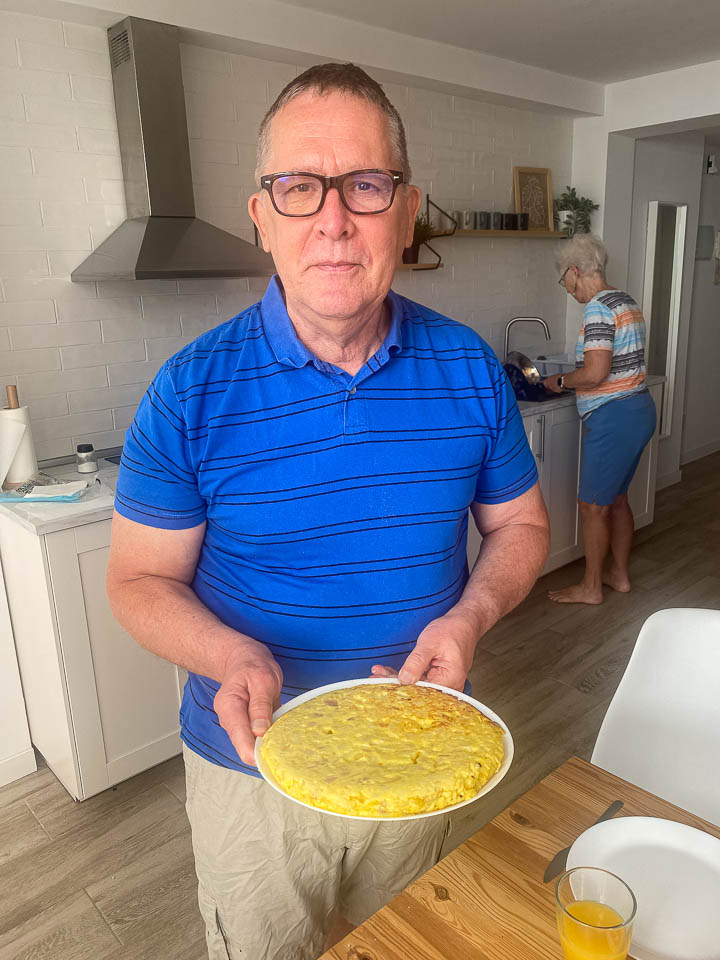
15. Voila! The finished product
A lot of this technique requires practice. Don’t invite company your first few times out. From experience, it tastes ok if it falls apart in the flip but, practice makes perfect or at least improves your odds.
Our friend Rachel in Sun City Center has promised me lessons when we return next fall. Maybe I’ll update this when she’s taken me to the next level and I’ve learned through experience.
We didn’t roll out of bed until almost 9 AM and left for the hills around noontime. Perfect timing for Spaniards on a Sunday, says Enrique. Personally, I had been clubbing slaving over a hot MacBook until almost 2 AM so the extra time in bed worked for me.
Our route is shown in the map. Generally, we headed almost as far north as we did going to Ronda, and some of the mountains we saw on that trip were visible today. Our route was rather haphazard as I kept calling audibles to try an uncharted route. The GPS lady lost her mind trying to get us back on track. Enrique finally put his foot down and refused to drive up a dirt road in the national park toward a cave I wanted to visit, maybe 10 km in. OK, maybe it was a hiking trail but it would have had nice views I’ll bet.
We stopped at a tourist information office in Monda (not to be confused with Ronda) who gave us some useful maps and advice. She urged us to walk five minutes (up hill; the whole town is built on a hill) to see the church. A mass was about to begin when we walked in but we admired the beautiful local parish church, as nice in its way as the cathedral in Malaga we toured yesterday.
As the church bells rang for the mass, we seated ourselves across the town square where Judy and Enrique had Coca Cola Zero and I had café con leche. Some of you know I average one cup of coffee a month, at most, back home. Here I’ve kind of grown to liking the stuff again. When in Rome . . .
As is the case almost everywhere in the world, there are two classes of people when it comes to religion, and that difference played out here exactly. The people in the church were elderly women with white hair (plus drag-along husbands). Those drinking beer in the café with us were young men with scraggly beards and pot bellies. Guess who’s feels that they are beginning to hear Saint Peter’s call from the Pearly Gates? Judy wondered if maybe we were in the wrong place.
The big deal here are the olive groves. You can see from the pictures that they aren’t planted on the level; there isn’t much level ground in these mountains. Enrique says olive trees are slow growing, tolerant of drought, and can live to be 500 years old. They blossom in May (the pollen causes great grief to allergy-prone Enrique) and are harvested in September. They must be softened in salt water (preferably from the sea) before they can be eaten or pressed into oil. Here’s a fun link that explains the process: https://www.youtube.com/watch?v=Hs22pgMltjg
We arrived home abut 5 PM for ice cream at the store around the corner (Italian ice cream it turns out) and a shopping spree to pick out a dress for Judy. We ended up with two dresses for her (French) and two shirts for me: “Spanish, not Chinese or Indian. Just like they are wearing in New York,” said the store manager. He knows a sucker lacking in any sense of fashion when he sees one.
Now we’re kicked back and will probably hit Old Town for a last go at tapas. Tomorrow we head to Enrique’s apartment in Madrid where we will stay the night. Then he’ll take us to the airport on Tuesday for the flight back to Boston. Soon after we’ll have to head to Onawa to open the place up, rake the leaves, repair a broken window and get the boats launched. But first, our farewell dinner in Marbella.
We trust Enrique without question. He knows Spain, he’s an experienced traveler and is not afraid to ask directions when needed. His navigation through some of the trickiest village streets earlier today couldn’t be topped. But a hint of doubt begin to make us question his reputation for steadfast travel-savviness as he led us to dinner tonight.
Enrique made a reservation for 10 PM for a restaurant outside the Old Town district but with good reviews, fish on the menu and a 30% discount on the Forks app. But first, we decided to walk through Old Town to find a restaurant that Judy had seen two days before. It took some doing, and instructions from a police officer strolling through Old Town on patrol. Once there, the somewhat frazzled manager told us he was booked until 11 PM. Time for Plan B.
Enrique and his trusty GPS led us on a 15-minute walk, the last several blocks along a street under serious construction. Judy had on her new long dress and fancy shoes not optimized for navigating uneven ground. When we found the hole-in-the-wall restaurant there were only six tables, three inside, three outside and all occupied. We had to sit at a narrow bar, ordered drinks and waited for the other patrons to finish dessert and pay up, which in Spain can take a while.
But finally we were properly seated and we ordered five dishes: mussels, sausage, prawns, sea bass and tuna. And much to our surprise each was a gastronomic work of art. (Maybe our taste buds were sensitized by a couple glasses of Tinto de Verano (summer red wine), sort of like sangria but different). We couldn’t decide on dessert so we ordered all three.The best of the lot was the cheese cake whose base was blue cheese. The whole meal, after the discount was about 50 bucks. We learned later that the restaurant had been open for only one week.
Enrique’s reputation is intact and enhanced. He’s made our final days in Spain a real treat as he did four years ago.
Tomorrow it’s off to Madrid and Enrique’s apartment.

